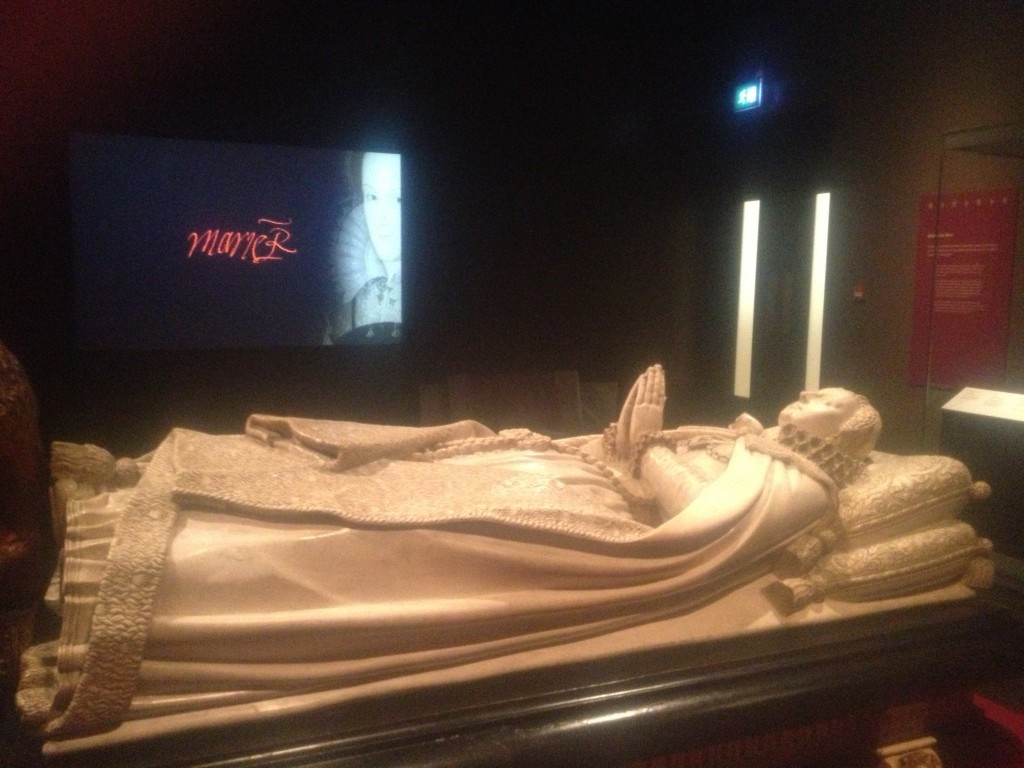 This summer’s big exhibition at the National Museum of Scotland in Chambers Street, Edinburgh, focuses on the life and death of Mary (or, given her French upbringing, should that be Marie?) Stewart, Queen Regnant of Scotland from 1542 to 1587. Significant loans from public and private collections in Scotland, England and France build on the NMS’s own items to give some sense of her life, personality and the world in which (to use the modern vernacular) she “operated”.
This summer’s big exhibition at the National Museum of Scotland in Chambers Street, Edinburgh, focuses on the life and death of Mary (or, given her French upbringing, should that be Marie?) Stewart, Queen Regnant of Scotland from 1542 to 1587. Significant loans from public and private collections in Scotland, England and France build on the NMS’s own items to give some sense of her life, personality and the world in which (to use the modern vernacular) she “operated”.
This is a timely exhibition, not least because it shows there have been long-held dynastic desires to unite the kingdoms of these British Isles—and not just by the English Tudors. On display is a sketch for Mary’s proposed coat of arms, which modestly declare her the monarch of three Kingdoms: Scotland, France and England. The explanatory caption suggests that, strangely enough, this idea didn’t go down very well south of the border!
However, the exhibition is timely in a far wider sense. I’m sure I’m not alone in seeing Mary Stewart primarily within the context of others; either as the emotionally weak victim of men (be they lovers or enemies) or as a minor supporting cast member in that damned Tudor soap opera. Thankfully, this exhibition does a very good job in presenting her both as an individual in her own right and as an at-times astute political figure within a wider European context.
When it comes to the former, I don’t just mean the new digital portrait created by those talented forensic artists in Dundee, best known for their portrait of Richard III (and, at least in Edinburgh, that of the murdered woman whose body was found buried on Corstorphine Hill a few months back). The range of objects on display underline how Mary loved to play the lute, was an exceptional needlewoman, enjoyed card games long into the night, and loved hunting and hawking as much as she did masques, fine clothing and exquisite jewellery.
In a wider context, the exhibition compares Mary to her peers, including the Tudors Mary and Elizabeth, and Catherine de Medici in France. But it also emphasises a truism of chess: unlike a King, a Queen can be ‘taken’. Is it fair to say that the only Queen Regnant to genuinely prosper was Elizabeth, in part because—certainly unlike Mary—she never weakened her own personal, political position through an inopportune marriage? And yet, in the longer term, the path of Virgin Queen only ensured the end of her dynasty, leading to Mary’s son, James, achieving what she herself had not—ascending the English throne and beginning the fraught process of British unification.
I must admit that there’s something chilling about the replica of the lid of Mary’s tomb from Westminster Abbey, carved with a representation of Mary; cold and alone. But perhaps it’s not as cold as the nearby letter from James VI to his ‘cousin’ Elizabeth, following the execution of his mother. If there is any anger, it is well-hidden in the words of a politically astute young man who is clearly determined not to risk his own dynastic ambitions. Blood, it would seem, is not always thicker than water.
Mary, Queen of Scots, runs at the National Museum of Scotland, Chambers Street, Edinburgh, until Sunday 17 November. Admission: £9 adults, £7.50 concession, children (age 12-15) £6. Free to National Museums Scotland Members and children under 12.
First published by Bella Caledonia; you can read their version here.